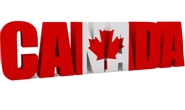Trade Cases

U.S. Tariffs Damaging Canadian Steelmakers
Written by Sandy Williams
June 27, 2018
ArcelorMittal Dofasco CEO Sean Donnelly told Ottawa lawmakers that U.S. tariffs may force the company to lay off 1,000 workers and reconsider investments totaling $564 million.
During testimony at a special meeting of the House International Trade Committee, Donnelly and other steel manufacturers asked the government to hold firm on retaliatory tariffs against the United States and seek permanent exclusion from the Section 232 tariffs. Donnelly said Canada should not escalate the trade fight, but should set duties that are “reciprocal and proportionate” to force the U.S. to relent on its steel tariffs.
Steel imports diverted to Canada have increased in the past few years and escalated in 2018 with the threat and imposition of the tariffs, said Donnelly. “This combined impact could result in reduced production, potential shutdown of operating lines impacting over 1,000 direct jobs and over 4,000 indirect jobs in Ontario, in Quebec, with significant implications” to future investment, he said.
The Dofasco CEO said U.S. tariffs are currently being split between Canadian producers and U.S. consumers, depending on the product, but tariffs and diverted steel imports to Canada is costing the company millions of dollars. “In order to continue with our investments, our shareholders require us to demonstrate adequate returns, and obviously this is difficult,” Donnelly said.
Evraz North America says U.S. tariffs have had a “tremendous immediate impact” on operations. Evraz NA CEO Conrad Winkler pointed to delays in U.S. pipeline projects and “reluctance” to ship large-diameter pipe to the United States because of the tariffs. Like Dofasco, Evraz NA is also reconsidering planned capital investments.
Smaller Canadian steel companies have reported “irreparable damage” from the U.S. tariffs as U.S. customers cancel orders and turn to domestic suppliers.
Hamilton manufacturer Janco Steel says it has lost 60 percent of U.S. business and suggests that Ottawa provide relief to Canadian steel companies with proceeds from the Canadian tariffs.
USW Canadian director Ken Neumann said, “We support the countermeasures announced by the federal government and believe that they must be comprehensive and immediate.” Neumann brushed off criticism that Trump should not be provoked. “If you don’t poke the bear, he’s going to eat your lunch,” he said.
U.S. Commerce Secretary Wilbur Ross acknowledged during a Senate Finance Committee meeting that Canada is not a national security threat and the U.S. does, in fact, have a trade surplus with Canada on steel in terms of dollar value. The tariffs are necessary, said Ross, to get other countries “to play ball with us” in solving steel overproduction and overcapacity, especially regarding China. Ross’ solution is for Canada to make a satisfactory deal on NAFTA and the tariffs on steel will “go away.”
With the looming prospect of a Section 232 decision placing tariffs on automotive imports, the Canadian auto industry voiced its concern about further damage to Canadian companies. “A 25 percent tariff on cars and parts would cause what we like to call ‘Carmageddon,”‘ said Flavio Volpe of Canada’s Auto Parts Manufacturer’s Association. “The industry operates on single-digit margins and it would grind to an immediate halt with a 25 percent increase in price. A $32,000 car — that’s an average price here — would immediately be unsalable at $40,000.”
The Canadian Automobile Dealers Association urged the government to resume the NAFTA negotiations. “We need to press to get back to the bargaining table and secure a NAFTA agreement and avoid, at almost any cost, a trade war on automotive with the U.S. to save both sides of the border from a destructive path,” said CADA President and CEO John White.

Sandy Williams
Read more from Sandy WilliamsLatest in Trade Cases

SMU Survey: Less support seen for Trump tariff policies
Meanwhile, an increasing number think it's too early to say whether the penalties are going to bring more manufacturing to the US.

CRU: USW seeks exclusion for Canada from Trump’s tariffs
The union is also urging stronger enforcement against countries such as China which break trade rules, and a coordinated Canada-US strategy to protect union jobs across the North America

Price on trade: A lot happened last week – and it wasn’t all about tariffs
Should foreign investment be allowed to reshape the American steel Industry? Not to be lost in the recent on-again-off-again tariff frenzy, Nippon Steel’s proposed takeover of U.S. Steel has also found itself in President Trump’s crosshairs when it comes to trade and industrial policy. Nippon Steel initially announced its nearly $15-billion bid for U.S. Steel […]

Trump signs executive order aimed at making US shipbuilding ‘great again’
President Trump on Wednesday signed an executive order meant to breathe new life into American shipbuilding and curb Chinese dominance in the sector.

Trump still against selling USS to Japanese firm: Report
Despite ordering a new review of Nippon Steel’s bid for U.S. Steel, President Trump said he is still against selling USS to a Japanese company, according to media reports.
